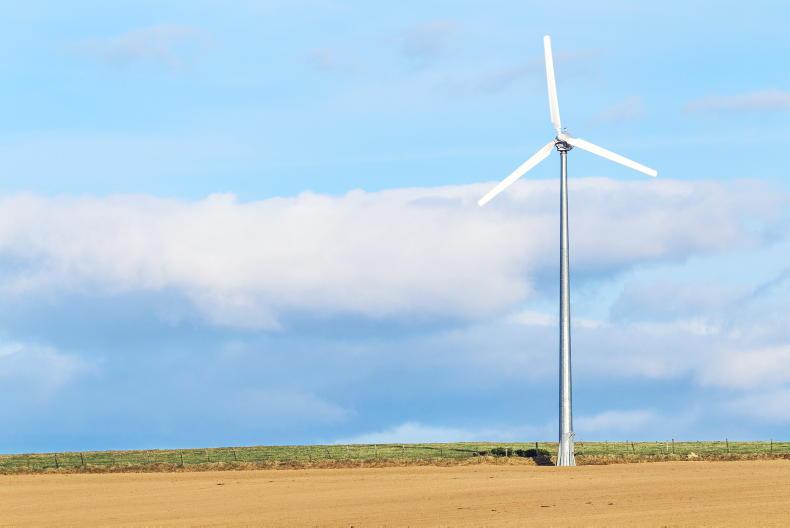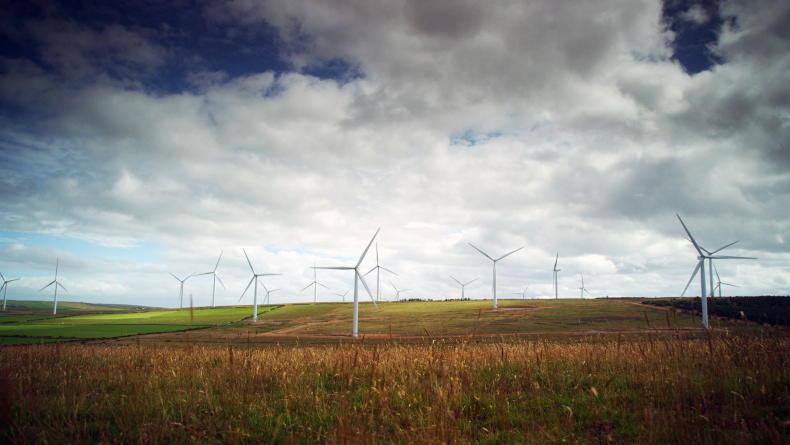Few countries provide better examples of multipurpose forestry than Austria. Spend a day with a forester in the forest region of Nasswald, lower Austria, and you will be forgiven for believing the only objective in his management plan is to ensure clean water for the people of Vienna, 80km to the northeast and, while it is, he has also to contend with leisure objectives, game management, forest protection and some, albeit minimal, harvesting.
An hour’s drive northwest to Ybbs and you will be convinced that Austria’s forests are the driving force behind the most productive and innovative timber processing industries in the world.
Cross the nearby Danube and head a short distance north to Rastenfeld and you will be left in no doubt that Austria places wood biomass at the heart of its renewable energy programme.
Everywhere you travel the benefits of forestry are apparent, including recreation and leisure tourism in a country where the right to roam is enshrined in Federal Law while forest objectives are identified clearly in the Austrian Forest Act. The act places emphasis on four key principles in sustainable forest management: production, protection, environment and recreation.
Clean water
Safeguarding the quality of Vienna’s drinking water is the main objective in the Nasswald regional forest. Peter Lepkowicz, chief forester, outlined the history of water in Austria. Vienna, like many European cities in the middle of the 19th century, suffered from water shortages and epidemics due to infected water. In 1864, the Vienna City Council voted to construct the first spring water main which a century and a half later is still the main supplier of drinking water for an estimated 2.8m people within the city’s metropolitan area.
The forest is managed to ensure the spring water consistently achieves the highest standards demanded by the people of Vienna. “Households pay €1.60 per cubic metre which is not high compared to other European cities,” he told a group of visiting members of the Society of Irish Foresters. This works out at 16c for 100 litres of guaranteed spring water, which is why the Viennese place a monetary value on their drinking water and, unlike the Irish and other Europeans, do not buy bottled water.
Clean water may be a right, but the people of Vienna and throughout Austria realise that it has to be protected, collected, monitored, managed and transported via two massive water mains to the city from a series of pristine mountain springs. We visited the Kaiserbrunn Museum, located on the First Vienna Spring Water Main, which delivers water via 120km pipeline to the city’s inhabitants. To guarantee a clean supply to the entire Rax-tSchneeberg-Schneealpe Massif area, where the springs are located, is a water protection zone. This includes forests, meadows and mountain.
He emphasised the importance of the forest in ensuring the highest standards of water quality for the region. “We must protect the water, which means protecting the soil,” he said. This requires adopting near natural silvicultural regimes. While wood production is a key objective in Austria’s forest, it is a secondary aim in Nasswald. “We do selective thinning but no clearcuts in this region,” he said. “We don’t use chemicals or heavy machinery in the forest. We are now planting broadleaves to protect the soils on the steep slopes as erosion will expose the bare Alpine limestone which is unable to filter the water.”
These broadleaved mixtures, including beech, ash and sycamore, grow up to 900m altitude and are reintroduced as succession forestry to replace the Norway spruce which was planted here after large-scale felling in the past. That broadleaves will not produce commercial crops is not an issue as the main objective is to protect the soil.
The annual production from this forest area is approximately 20,000m3, which is negligible, so the forest region’s main income stream is from public funds for water protection.
Clean energy
Our guide during the visit to Austria was Michael Bubna-Litic, a forest owner, forester and farmer. He said the relationship between farmers and their forest was close in Austria. “Farmers love their forests here and have a hands-on approach to their management,” he said. “They carry out the logging themselves and apart from selling their logs to timber mills, have free energy as most have converted their homes and farm buildings from oil heating to wood biomass.”
We visited Nawaro Energy in Rastenfeld which includes a power plant, sawmill and pellet production unit. It utilises just 700 dried tonnes of wood chips weekly in the power plant’s two 5MW boilers. In addition to supplying energy for the sawmill and pellet plant, surplus electricity feeds into the public grid.
The two main renewable energy sources in Austria are hydropower and bioenergy. Approximately 670 run-of-river power plants and 1,800 small-scale hydropower stations generate almost two thirds of Austria’s electricity needs.
However, bioenergy has grown steadily and is now has a share of 58% of the total renewable energy source – heat and power. With forest cover at 46%, the Austrians plan to increase biomass energy over the coming decades.
Like the Danes, they have ambitious targets for renewables. Austria’s renewable energy target is 34% by 2020 – more than double Ireland’s stated but unachievable target – and it plans to be 100% sufficient in energy from renewables by 2050.
Conclusion
It is difficult to draw comparisons between the forest sectors in Ireland and Austria as the forestry and forest products industry throughout Austria is far more advanced. For example, approximately 46% of the land of Austria is under forest which is more than four times the forest cover in Ireland. As a result, the annual cut is 19.8 million m3 compared with little over three million m3 in Ireland in 2015, although this is forecast to increase to 7.8 million m3 in 2035.
With a land area approximately the same as Ireland and a population of eight million, forestry is seen as a profitable and integrated land use in rural and urban Austria. Its benefits in renewable energy and climate change mitigation are acknowledged while the performance of forests in improving the quality of drinking water and protecting vulnerable landscapes has been recognised for centuries. Without forests, the Alpine region could not be inhabited, as well-managed forests prevent flooding and avalanches.
Other issues including forestry research, the environment and species diversity will be addressed in a future Irish Farmers Journal article.
‘‘Everything that’s made with fossil-based material today can be made from a tree tomorrow’’
– Stora Enso
Replacing all fossil fuels with wood is an almost extravagant boast but, like the Austrian government and forestry stakeholders, Stora Enso believes in its corporate vision as Austria aims to become a totally green economy by 2050.
Although Stora Enso was formed as recently as 1998 when the Finnish company Enso Oyj merged with Stora Kopparbergs Bergslags Aktiebola, the company has a long tradition in forestry and mining going back to 1288. It eventually sold its mining operations to concentrate on forestry, pulp and paper in the 1970s. Today, Stora Enso employs 27,000 people in 35 countries and in 2015 sales exceeded €10bn.
The Stora Enso mill we visited in Ybbs consumed 988,000m3 of logs in 2015. Finished products include cross laminated timber (CLT), joinery, sawn timber and wood pellets for energy.
CLT is an engineered wood building system comprising layers of boards glued together under pressure with the grain of the boards in one layer running perpendicular to the grain in adjoining layers. It has high strength and dimensional stability and can be used with or as an alternative to concrete, masonry and steel in many building types.
Austrian architects, engineers and builders are leaders in the CLT construction, but other countries are also well advanced. Buildings up to 50m high have been constructed in CLT in Norway and Canada.
Norway spruce is the preferred species in Austria and elsewhere in Europe while NUI Galway is conducting research trials exploring the suitability of Sitka spruce for CLT.
Forestry and Timber Yearbook launched
Andrew Doyle, Minister of State with responsibility for forestry, launched the 2017 Forestry and Timber Yearbook recently. “This anniversary edition of the yearbook, which celebrates 40 years of the Irish Timber Growers Association (ITGA), is regarded as a major source of information for those working in the forestry and timber sectors,” he said.
“It is an invaluable reference and an essential publication and I am particularly delighted to launch this edition as it covers the forestry and forest products sector from nursery production to finished products,.”
ITGA chair Brendan Lacey said: “Our annual yearbooks in sequence form a historical record of the development of the forestry sector and the many growers, foresters, businesses and people that played their part. The significant progress of our industry is reflected in the statistics contained in the yearbooks over these years,” he said.
As well as launching the yearbook, Minister Doyle welcomed the announcement of research grant awards approaching €2m for collaborative inter-institutional forest research projects under the Department’s competitive forest research funding programme, CoFoRD. “This research funding will make a significant contribution to the sector in terms of its continued competitiveness and sustainability, while also adding to forest sector research capability,” he said.












SHARING OPTIONS